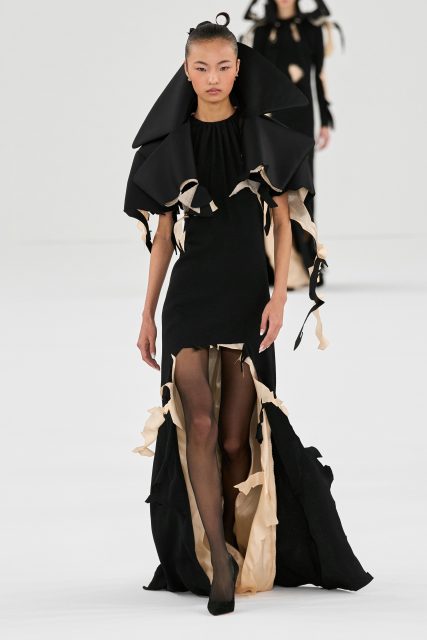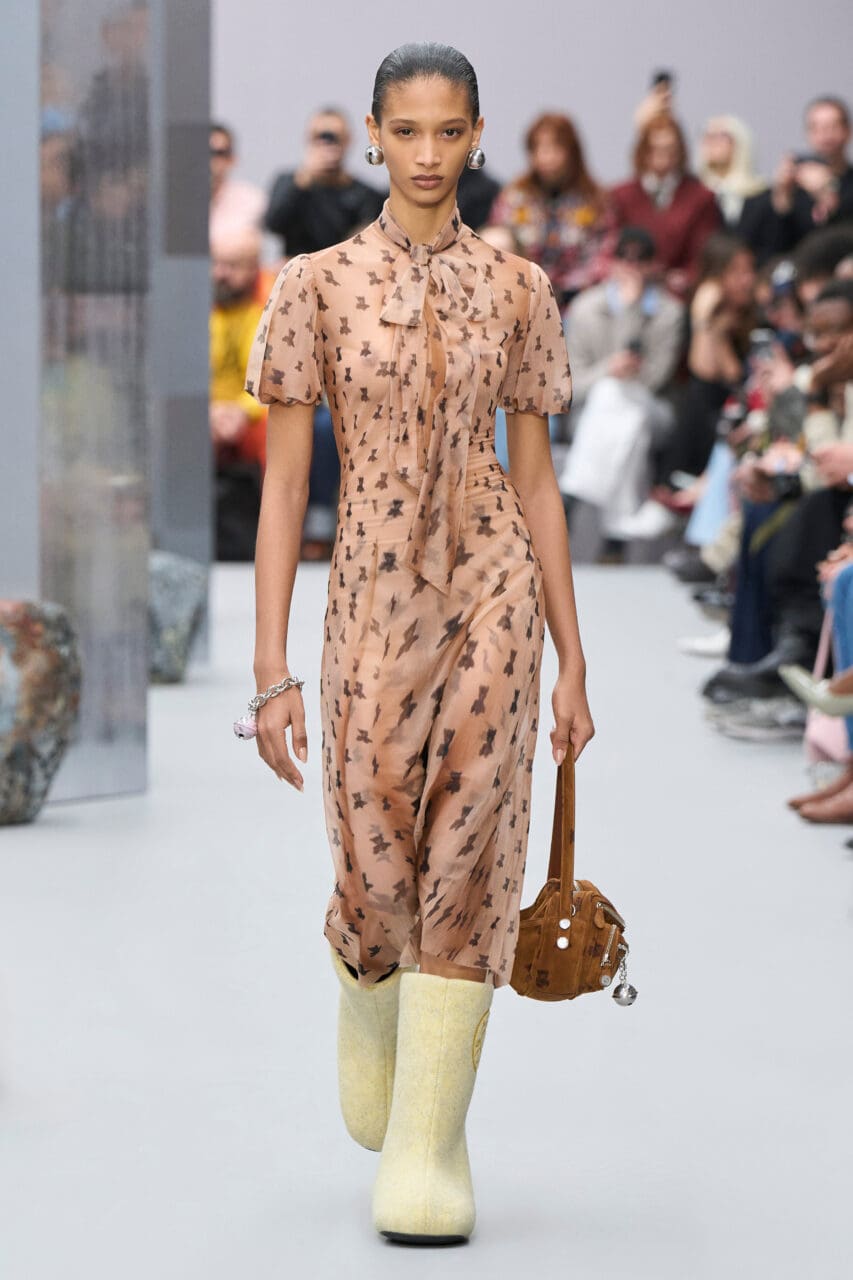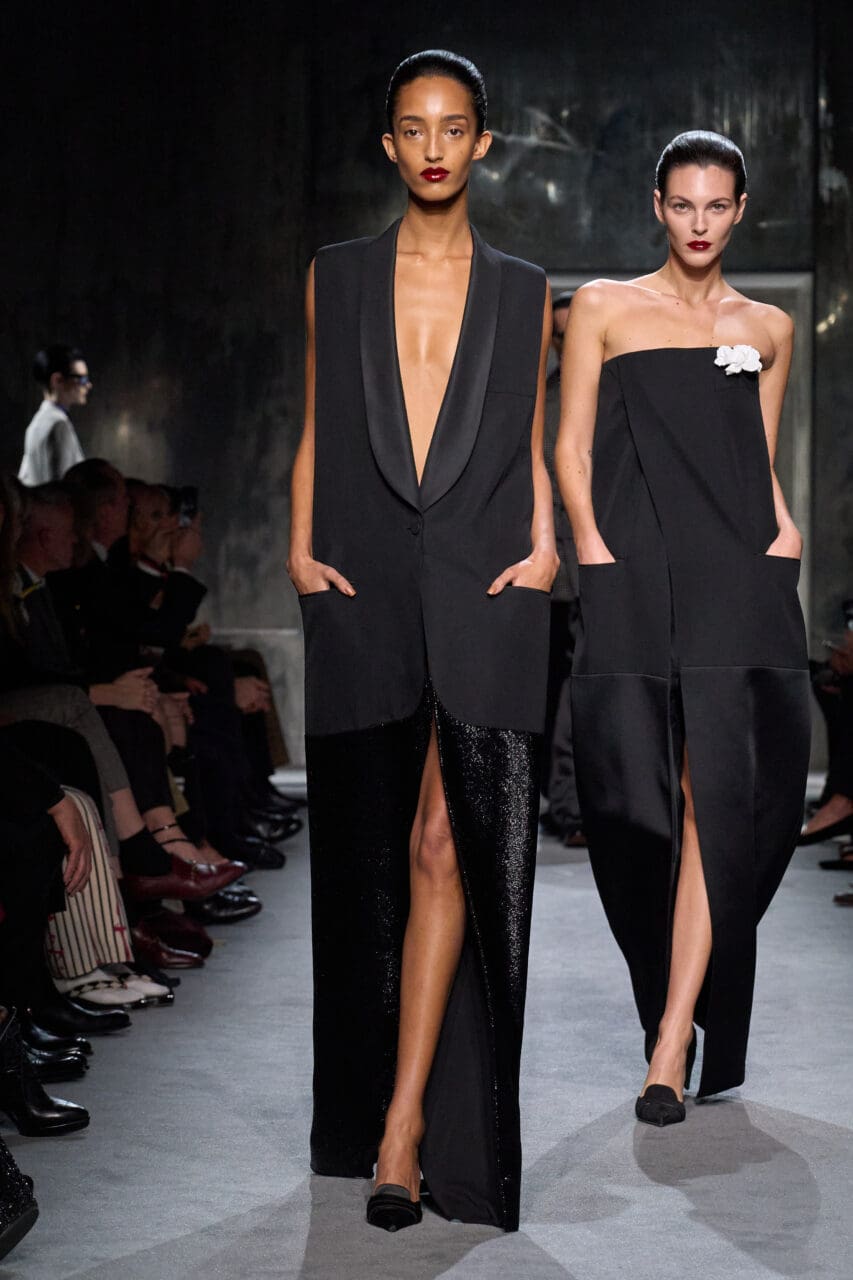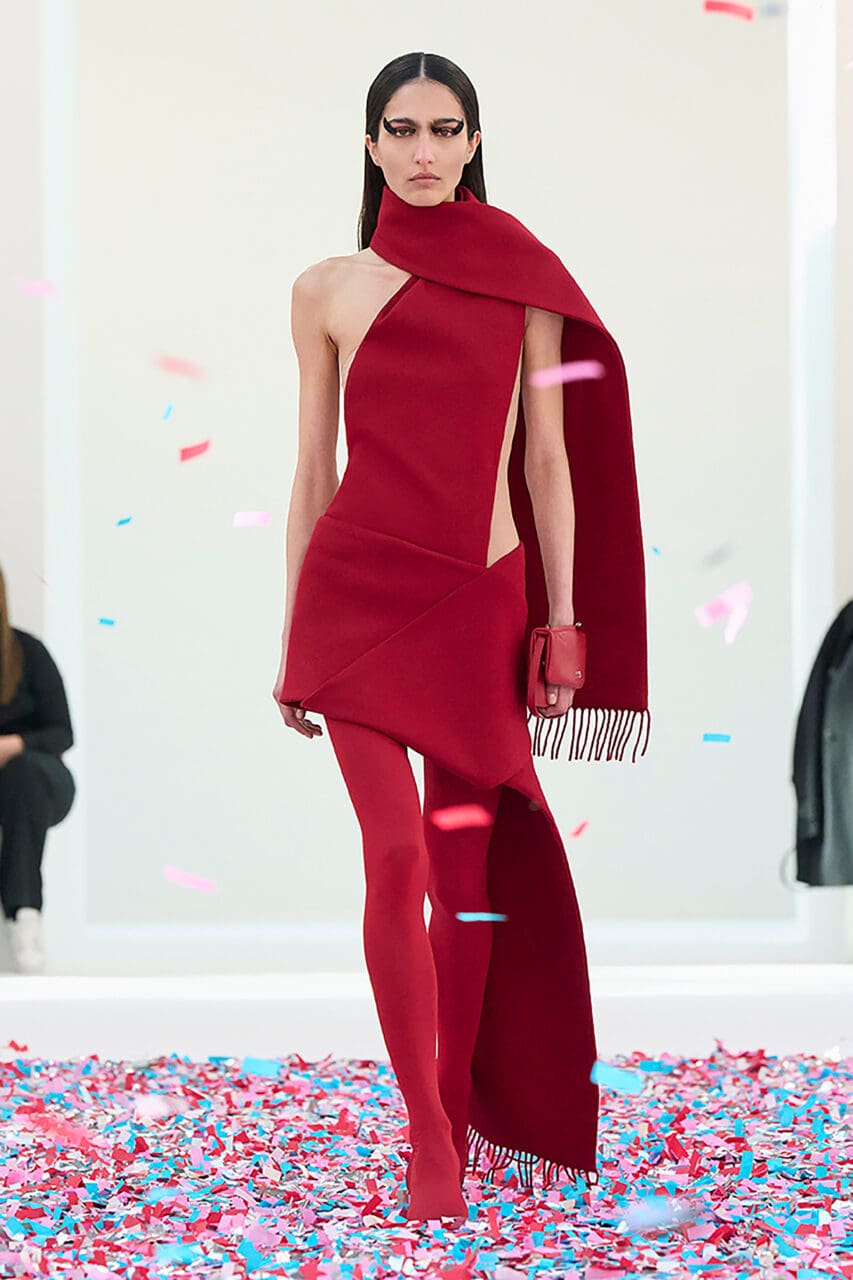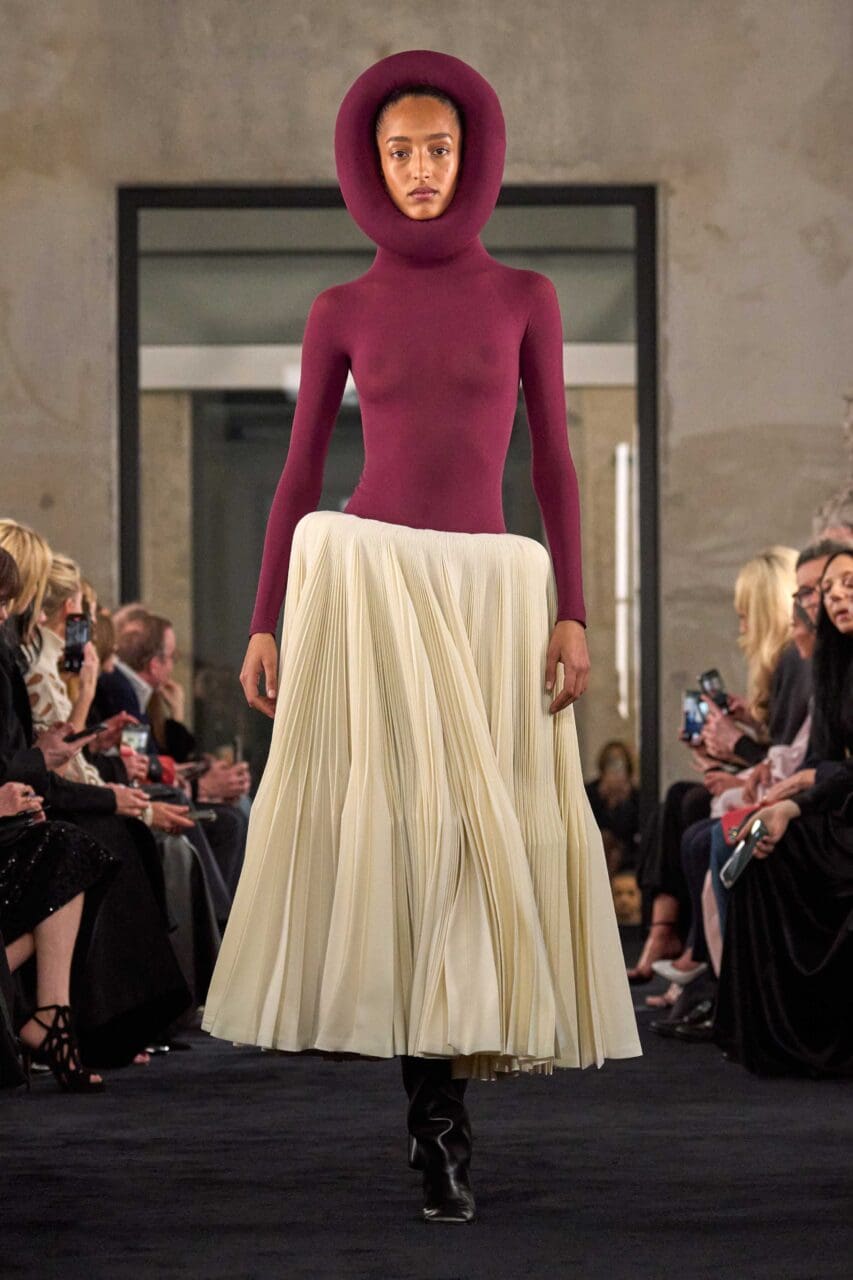Under the Pont d’Alexandre III after dark, down rain-soaked steps, with the Seine roiling alongside, we stepped through an underground door- and into a rancid Parisian nighttime joint with bare floorboards, cafe tables, dim mirrors, and a bar overflowing with spent drinks. And here, sitting at wooden tables in the eerie yellowed light, we witnessed John Galliano conjure a world of characters and couture that was a more staggering, shockingly 100% Galliano experience than fashion has enjoyed for years.
Theater, emotion, rebels, and romantic-historical fantasies have fueled Galliano’s creativity forever. This time—according to house notes—it started with Brassai’s 1920s and ’30s portraits of the night-time underbelly of Paris’ clubs and streets.
His transferences into cutting, ultra-extreme corsetry, padded hips, erotically sheer lace dresses, and wildly imaginative hair, chiffon-masked makeup, and eerie doll-like body-modifications took a year. A year to work on a production that seamlessly mixed film—which played in the mirrors—into the scenario, showing lovers, dancers, and gangsters prowling the banks of the Seine. To make it seem that these strutting denizens, fugitives from fights, or half-dressed from sexual encounters, clutching their moon-bleached coats or scrappy cardigans around them were actually congregating from the riverside and into the club before our eyes.
There will be scandal around these apparitions. Through some of Galliano’s beautifully delicate hourglass dresses there was pubic hair to be seen through tulle and lace (they were merkins on underwear, but still bound to stir up a storm). Some of his indescribable techniques looked almost like walking paintings, greenish-pink watercolor nudes with blurry dabs for eyes.
As far as fashion is concerned, all the images and impressions from this show will be burned on the mind’s eye for many reasons. Firstly, because Galliano made such an all-out stand for the value of extreme creativity in a time when, all around, daring in fashion is at a low ebb. And secondly: because this time, he spoke with the authenticity of his own voice, the voice we’ve known for so long—yet more powerfully and more skillfully than ever. There are plenty of lessons in that which might resonate across the industry.
Editor
Sarah MowerCredit
Lead image: Filippo Fior / Gorunway.com
